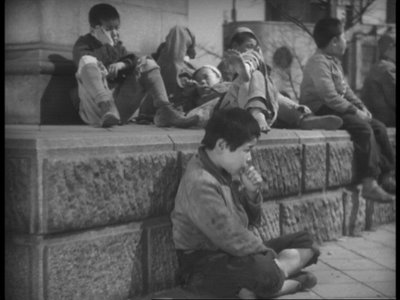"Hide what the spectator most wants to see" (Ozu)
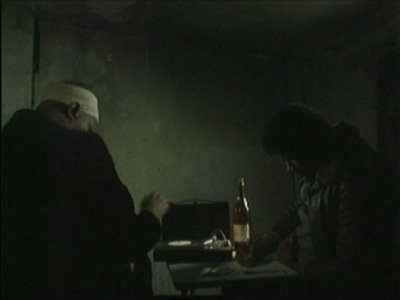
Not seeing, hearing a love letter by Ventura, recited to Lento. COLOSSAL YOUTH (2006).
I see useless beauties
Extinguished in the night of doubt
And the flowers are not real
And the earth becomes barron
Soon I must say nothing
Yet if I walk the earth
The reason is that others too are there
Who like me spoke haltingly
When we were not entirely silent.
Excerpt from Ailleurs ici partout
(Here There Everywhere)
by Paul Eluard
trans. Gilbert Bowen
By no small miracle did a 35mm print of COLOSSAL YOUTH (JUVENTUDE EM MARCHA, 2006, Pedro Costa) make it to Los Angeles. And by no small miracle was I able to find out about the screening and attend on September 27th (thank you Andre D., Filipe, Curtis, and David N.). It came by the good graces of Thom Andersen, still one of the great torch bearers of modern cinema/history in Los Angeles, and under the most unassuming of headings:
Film Today, Andersen's class at CalArts (30 miles from city). I must dwell on Andersen's vanguardism for a moment and point out that this CalArts screening of COLOSSAL YOUTH was the U.S. premiere. What's more, no sooner did that week's artist-in-residence Costa leave the campus, Apitchatpong Weerasethakul was on his way. If there were only a way to amplify from Andersen's cinema pickups 30 miles out to the the public of Los Angeles! If this were done regularly I'm convinced it would reduce traffic, if perhaps increase loitering, as any good film screenings should. Anyhow "all great civilizations are based on loitering."
I've seen COLOSSAL YOUTH only once (to Andersen's credit, it was actually screened twice). For an extraordinarily concentrated film like COLOSSAL YOUTH -- an object so deeply hewn on every plane and every register -- this is both a curse and a blessing. The need to verify (or overturn) certain things about COLOSSAL's narrative is immediately and intensely felt; one wants to see it again straight away. But as the film sustains in the mind (something that goes on for weeks) the inscrutability of it strengthens into stanzas and its poetry reemerges. I don't believe any amount of dvd extras could destroy its mystery. The film's relation to time (narrative and cinematic), it's images (which remain overwhelmingly strong), the many stories of it's individuals and their implications -- what of these things will "set" upon further viewings?
While wondering this, for better or worse, I have begun comparing COLOSSAL to other films. There are few films that stand on their own two feet as steadily as COLOSSAL YOUTH, and lest the many film references below give any other impression, let me admit that they are my own attempts to stand. Mystery, and yet...
And yet one question haunts me now: is the film's narrative actually unequivocal? Upon seeing COLOSSAL I immediately thought "this is what it must've been like to see LAST YEAR AT MARIENBAD in 1961", but the possibility of unequivocality has lead me to NICHT VERSöHNT (Straub/Huillet, 1965). Were people seeing NICHT VERSöHNT just once then scrambling for the Böll novel on which the film is achronologically based? Were they seeing NICHT VERSöHNT several times and ignoring the Böll text? In any case, in 1969 Rivette said this about NICHT and it could well apply to COLOSSAL YOUTH:
"Straub imposes on the spectator (the virgin spectator viewing the film for the first time, at any rate, but also in part a subsequent viewings) an obscurity in the language, which seems wilfully indirect, apparently unaware of him as the addressee (even if he nevertheless, though tacitly, fulfils his task), and which prevents him from direct attainment of the 'knowledge' it seemed to be entrusted with bringing him; the film functions before him as a dream, one might say, as the product of an unconscious (but whose unconscious? Does it belong to the literary text? To fifty years of German history? The Straubs? The 'characters' in the film ? )..."
(from 'Montage' by Jean Narboni, Sylvie Pierre, and Jacques Rivette - Cahiers du Cinema, No. 210, March 1969 - an heroic translation by Tom Milne)
Straub/Huillet's film is a complex operation on and materialization of a literary text (as always with them) and though prior knowledge of Böll's story far from dissolves all mystery of NICHT (it's not a puzzle, in fact it's articulations are inexhaustible), there is a known source in Böll to keep one's footing. They are realizing pre-existing material via excision and liasons (as Rivette calls them) and they are doing enormous work with a text laid out in front of them (
see the Straub's heavily marked scripts), shuffling and emphasizing here, totally eliding there.
Costa's film may seem cryptic at first but there is something of necessity about the way it has been told, with it's soft indications of past and present, with it's particular ways of breathing and duration. If I can call this Costa's policy of presence (partly inherited from the Straubs but also Ozu and Ford) -- that is, the giving of time and weight to each person and place to work itself out "against" the montage and offscreen space -- it is another layer to take in which makes focusing on narrative chronology difficult. (And then there's a friend of mine in Taipei who found the chronology quite tractable).
COLOSSAL is comparable in density to NICHT, but there is another challenge; one of essence and consciousness, and that is of COLOSSAL YOUTH's source. The revelation of Costa's filmmaking, as film critic Quintin has elucidated it, boils down to the filmmaking process itself: "...the issue here is that the whole machinery of cinema is not exterior to its subject -- and by including cinema on the side of his subject, it no longer becomes an instrument of law and order." (Cinemascope 25, Winter 2006). COLOSSAL's subject is not a literary text but the actual stories and memories of the working class and unemployed of the Fountainhas ghetto and the new Casal Boba housing project in Lisbon. Costa has said his films are not creations but meetings. With each meeting we hear struggles orally recollected. Huillet/Straub's restoration of oral culture is taken to heart by Costa. He lives with the people he films, and he works hard everyday with them, with their stories and places. Costa's practice and the dignity and "non-inferiority" (Quintin) of Ventura, his children and comrades that results is nothing less than a restoration of the monumentality of humanity, and it is done precisely with every cinematic means a film is capable of. It's as if a year had been spent on each element of the film: lighting, composition, location, sound, voice, scansion, movement, duration, time, narrative, epic gesture, etc.. This dignity isn't created by Costa, it's been there all along; Costa's camera may often be low-angle but its thinking is the opposite of base. Contrary to professional belief, the cinema must concentrate the aforementioned cinematic elements, and perhaps use some unprecedented ones, to even approach these struggles.

So if the film is based on
understanding, not decipherment, will this give any solace to those hostile or dismissive of it?
PRECEDENCE
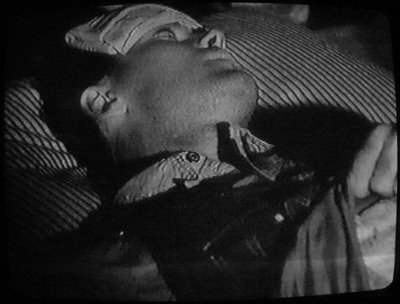
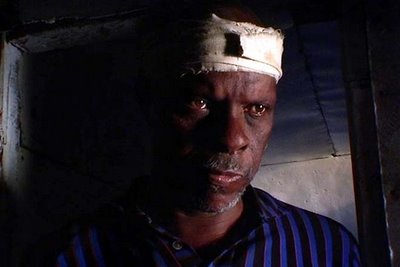


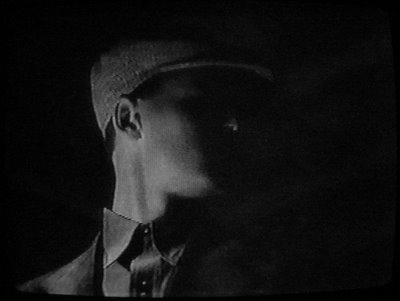
What is COLOSSAL's surrealism? For me it is too early to say, there's work to be done. There are many factors, even down to its spatial organization that could bring one to call it surrealist. It's also a matter of decoupage. Certainly it is a "hallucination that is also a fact" (Bazin). In the films long recollections where the past and present seem to shift in mid-sentence or in the grand pauses that take up whole chunks of the encounters, there is a dream-like tone and each scene begins (and sometimes even ends) with an "out-of-order" chink for the penny-slot of meaning. But this quality is not the sole domain of Ventura's consciousness, as singular as he is. He and Costa and the cumulative effect of everyone encountered are much more generous. "In this world's structure, dream loosens individuality like a bad tooth" (Walter Benjamin, "Surrealism" 1929).
There is something else underlying Ventura's encounters with the people of Fountainhas and it's something he carries with him wherever he goes. It's something white walls and new monstrosities can't erase.There may be some indication of what Ventura is carrying in John Ford's GRAPES OF WRATH, two films with many affinities.
THOSE ENCOUNTERS OF THEIRS

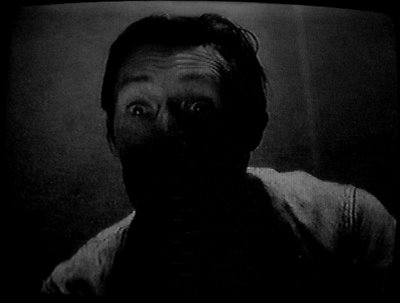
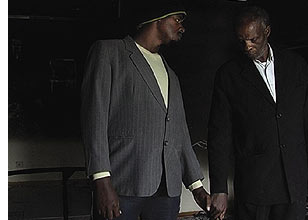
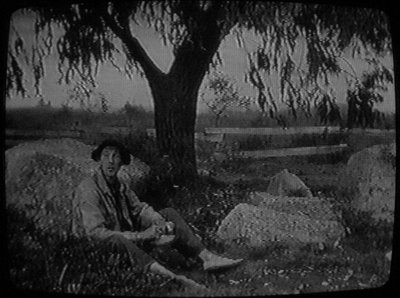
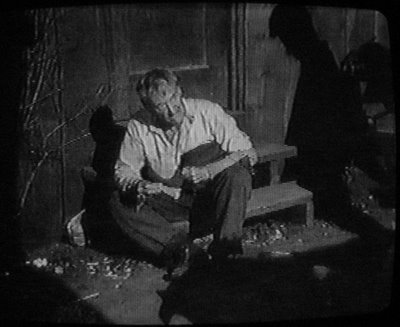


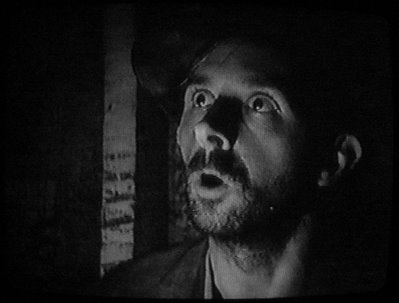
When Tom Joad (Henry Fonda) sets off at the end of GRAPES OF WRATH it's as if he contained the destiny of the human family to be a community, as if he were setting off as a witness and a realization of that dream at once. He aims to simply be present, not even to take action. To be "all around in the dark" as he says in his famous dialogue with Ma Joad. "To be in the way guys yell when they're mad. In the way kids laugh when they're hungry and they know supper's ready..."
Tom Joad learns from Casey (Carradine) why he gave up preaching: "a preacher's got to know. I don't know. I gotta ask." The gentleman Ventura, in Costa's true record of a tenament gentleman, often doesn't even ask - he is present, he listens and he says what he knows. Tom Joad recollects Casey's words: "Fela ain't got a soul of his own, but little pieces of a big soul. The big soul that belongs to everybody..."
By the time Tom Joad orally passes on these words above, the words of a friend literally beaten to death by a system, he has suffered the material loss of home, of work, of family, and he has suffered the material and spiritual tragedy of "people living like pigs and good rich land layin' foul". Ford's film shows the Joads doggedly tricked and exploited at every turn while trying to get work and find a home. The Joads find in every outskirts camp and every job the impossibility of "eatin' stuff they raise, livin' in houses they build." This constant laceration and the feeling that all humanity has been scarred is carried by Ventura as well and confirmed by the people who tell him their stories. This yearning for purposeful work in one's own interest as opposed to proletarianization is repeated several times by different people in COLOSSAL YOUTH. One of them is temporarily selling toys out of a large plastic bag. Later the same man (?) tells Ventura about his life and work from a hospital bed. A scene of prostrated confession, as in so many Ford films (an illness or wound nursed with feelings exposed in THE LONG GRAY LINE, HORSE SOLDIERS, MY DARLING CLEMENTINE, PRISONER OF SHARK ISLAND, DOCTOR BULL).
As Tag Gallagher points out in his very lucid (if less loving)
chapter on GRAPES OF WRATH, in this film Ford focuses on the effects rather than the causes of the Joad's disenfranchisement. But the causes are at least within reach from the step by step presentation of the exploitation. This is only partly present in COLOSSAL YOUTH where the effects of the effects have already been long contemplated. It's closer to trauma, but also wisdom.
In GRAPES, when there is time (!), this traumatic wisdom comes across in vignettes between Tom Joad and the people he meets, people often ducking the cops; just kicked out of somewhere or about to be. These people relate what has happened to them in ricorsi (a term used by Gallagher to describe instances of "
reliving" in Ford and Straub/Huillet). Though COLOSSAL's vignettes are vast and make up most of the film, the ricorsi of both films reverberate, one overlapping the other as they are approached or departed (like the vibrating bottle in Ventura's room as he paces). Just momentary stasis in GRAPES; prolonged stais in COLOSSAL: both squating down in some barely lit temporary place, both transitory.
"Twilight makes even very clear handwriting impossible to read" (Goethe)
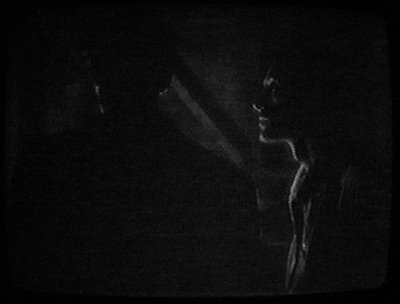



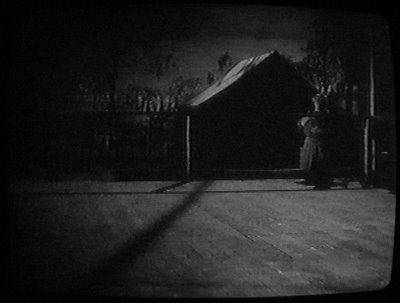
In both films the camera is often below eye level, about waist high. The compositions are wide angle but planar rather than spatially deep. People and things rarely move toward or away from the lens -- they move in, from side to side. Costa and cinematographer Leonardo Simões (I've yet to find details on Simões contribution) sustain an extremely low lighting scheme that Ford and Gregg Toland only occasionally hint at in GRAPES (extraordinarily enough however). According to one Portuguese review, COLOSSAL was lit entirely with natural light reflected off of nine different mirrors Costa came equipped with. The lighting of both films is natural and abstract at once. In
Michael Sicisnski's extremely sensitive review of COLOSSAL he reminds that "Costa's hieratic lighting effects were possible [because] his subjects were living with holes in their ceilings").
DESTRUCTION
Daryl Zanuck tacked on the ending of GRAPES as it is, with Ma Joad's epilogue speech. Ford intended to end it with Tom Joad setting off...
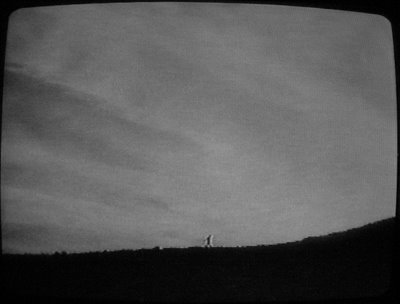
In Gallagher's view Zanuck's ending "virtually destroys the films trajectory toward inevitable disintegration/revolution, in favor of perseverance/abidance."

The above still frame could be right out of one of the more Fordian scenes in COLOSSAL, where Ventura, his daughter and another man stand outside their home, nearly in salute, to watch a funeral procession off screen (THE SUN SHINES BRIGHT). But what is this image's context in GRAPES? It's the last shot of Muley's flashback recollection of the destruction of his home by the Shawnee Land & Cattle Company.
Destruction is
seen in Ford's film whereas in Costa's it is mainly
heard through a complex off-screen sound
construction. In Ford's film the demolition is seen as enacted by a "Caterpillar" (not unlike those used by Israel to bulldoze the homes of Palestinians). Ford does a brief montage of Caterpillar tractors in the middle of Muley's flashback to show the volume of the destruction of homes ("for every one [tractor], there was 10, 15 families throwed right outta their homes"). The montage is of
tractors -- not
tractors destroying homes -- therefore in a different film this montage may have been a hymn to socialist
construction or, to be more up to date, a cry against the
construction of something horrible like a McDonald's or ill-conceived like a liberal-bureaucratic-reformist housing project. The potential of a thing to be constructive or destructive.
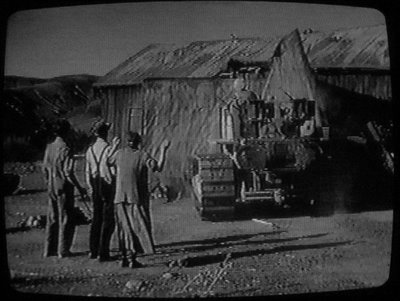
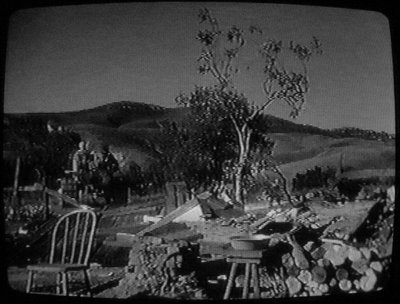
If the below still frame showing Henry Fonda walking through a skeletal doorway (with a tire hanging on it and the sky above) looks a bit like surrealist painting, those signs among him are more expressionist in context, considering that Joad (Fonda) has just been told that the outskirts camp they've been staying in is going to be burned down by contractors. Earlier the contractors came to the camp looking for workers but some of the workers were wise to the contracter's tricks. The only way the contractors can get the cheap labor is by the desperation of burned out refugees.
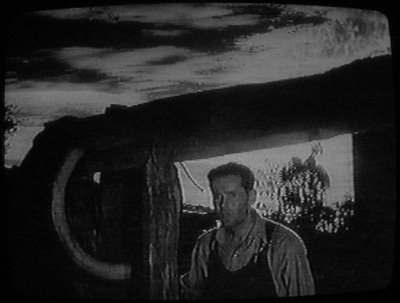

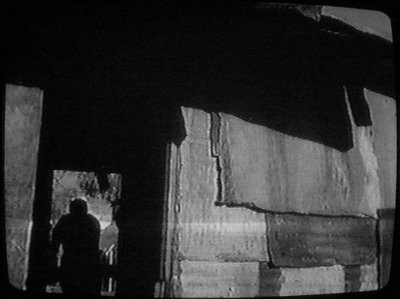
Above, the "agitator" (conscious worker) flees the cops through a doorway. The "agitator" flees because he beat a cop that tried to shoot him. The cop missed the "agitator" hitting a woman bystander instead.
Andre Breton called his novel NADJA "a book with a banging door". Costa seems to always mention doors and doorways. For him they are something fearful and something hallowed. It's where fiction/reality may be discovered or where the reality/fiction may bar itself from you. Ventura and Lento hang their hats next to a door banging with the wind and cold. In one of the first few shots of COLOSSAL Ventura approaches a dilapitated building, shakes the hand of a man standing by it's doorway, and they both wait outside. Loud banging and screeching are heard. One level of the noise drops and another man comes out of the building through the doorway -- a friend of Ventura's who will share lunch with him in the next scene.
V +/- V
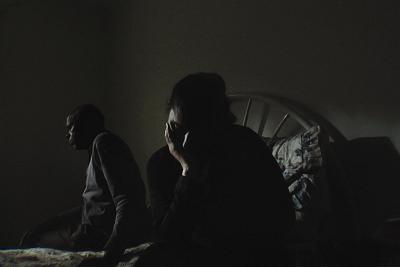
The scenes between Ventura and Vanda in her room are the convergence of old and new. Vanda repeatedly mentions the brand-name of diaper and Ventura does not comprehend this; Ventura, (witness to past times of palpable solidarity and community) is attentive in silence while a TV yammers on for attention and domination; we watch Vanda's constant and mortal coughing and her million songs of experience next to her daughter's quiet youth and song of innocence.
As COLOSSAL proceeds and it is evident that Costa is mixing the naturalistic gait and words of Vanda with Ventura's more stoic exchanges, Vanda and her room begin look like a mixture of Walter Brennan/Monument Valley and one of Godard's TV documentaries. Ford often mixed acting styles and tones (MY DARLING CLEMENTINE, THE LONG GRAY LINE, 7 WOMEN), contrasting the colloquial and homespun with the grand responsibilites and fates of a new landscape. And Godard has been one of the only ones to convey and critique the din of domestic TV presence by means of the cinema, to discover the labyrith of social relations created by a blarring TV (NUMERO DEUX, FRANCE/TOUR/DETOUR/DEUX/ENFANTS).
As these articulations intermingle in Costa, it raises the issue of modernism and traditionalism (over and underdetermined in both Godard and Ford). I must leave this to those who are much better at distinguishing such things, where they need be distinguished. As both issues have bearing on the perceived "enterability" of Costa's work I must say that distinguishing is probably less important than engaging with the subject (which this post may show,
is hard to do in it's absence). Costa has taken huge amounts of time to do this himself. Some critics are so cynical they consider Costa's practice a kind of MacGuffin (
David Walsh). His films can be dismissed with a few words like "for a small fan-base". (The first half of that Goethe line is: "
Whoever wants to accuse an author of obscurity ought first of all to have a good look at his own inward self and see whether it is really light in there.") . Meanwhile, whole countries are turned to dustbowls by global capitalism. Like the Straubs, Godard, and even Gehr before him, Costa is charged with elitism; but (as Gilberto Perez points out) what could be less elitist than making films with means that anyone could take up (16mm in OTHON [Straubs], a pocket 16mm camera in NOONTIME ACTIVITIES [Gehr], video in HISTOIRE(S) DU CINEMA [Godard], video again in IN VANDA'S ROOM and COLOSSAL)?
Trompe-l'œil
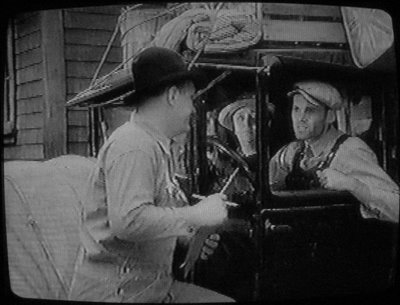

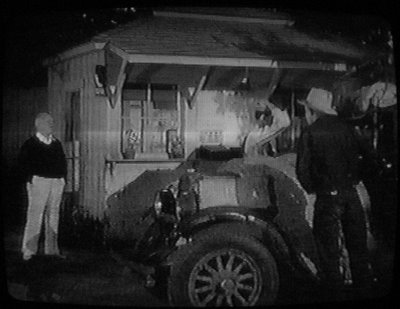

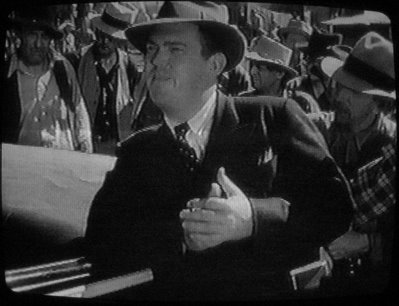
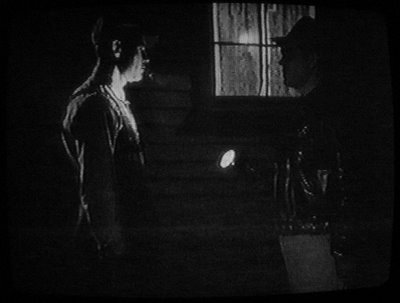
In GRAPES Ford repeatedly shows the Joads together or singly approaching or being approached by people ostensibly offering help. Often these are wolves in wolves clothing but speaking with the modesty of sheepherders. Their methods and tricks are exposed (the economy of effects). Even Ford's New Deal camp director seems suspiciously dispassionate, a simple bureaucrat (he emphatically shows no reaction to some of the Joad children's hijinx with a camp toilet).
In two succinct sections, Costa shows some skepticism toward a welfare agent offering an apartment to Ventura. There is a vacancy in this housing project and the agent has a clipboard telling him it is meant for Ventura. Ventura goes to see it; he stands in this completely empty room with white walls -- walls that seem to try to blot out the past that saturates every other encounter. Costa/Simões completely wash out the windows to the outside world.
When
Variety called Ventura a "vacant guide", they not only missed everything made visible by Costa and Ventura as he stands in this abstract white room, everything Ventura carries with him, but they may have also succumbed to the State's notion of "occupancy" (the housing project). The white walls "have spiders" as Ventura points out. The apartment is not big enough for all of his children, Ventura tells the agent. The room looks like the end of 2001 (Kubrick). But will Ventura grow old and die here (in minutes, seconds, years?). It should be reiterated that the struggles of Ventura and the other inhabitants new to the Casal Boba housing project are ongoing.
In one amazing eye level shot in COLOSSAL (like GRAPES the camera sometimes changes to eye level when the authorities are around) Ventura is being led around in the new apartment by the welfare agent. The agent opens a door and they enter an empty bedroom. The door is slowly self-closing however, soundless and sterile, giving Ventura enough time to briefly take a look then slip out before it closes. Ventura goes off-screen, effectively closing the door to the agent who is still inside the empty room glorifying the beneficence of the housing project to himself. These scenes inside the new apartment are Costa's sharpest and most biting.
LAST SHOT
In these possibly overlong notes on COLOSSAL YOUTH in the absence of much dialogue or a chance to see it again, I have ignored much of the film to emphasize a few small bits. Another film, ZVENIGORA by Dovzhenko, also came to mind after the CalArts screening; it too uninhibitedly leaps from era to era, deals with time, roots, sons, fathers, whole peoples, stubborness, destruction, and the designs of the state versus the folk -- and it does it with urgency and unabashed texture, like COLOSSAL.
As Mark Peranson has said in Cinemascope (Number 27, Summer 2006) the youth of "youth on the march", the COLOSSAL YOUTH, are represented in the film by Vanda's young daughter; she's barely in the frame throughout the film and all the more stronger for it. It's a Renoirian idea that explodes in the final shot. Vanda asks Ventura to watch her young one while she goes out to do some housecleaning work. The next shot, on which the film will end, is of Ventura lying on his back in Vanda's bed, one leg crossed over the other in the air, Vanda's daughter in the extreme lower right hand corner of the frame creating a tension, standing dormant her small subtle movements. "You must give the feeling the frame is too narrow" (Renoir). The young one remains silent in Ventura's presence, as she did during her mother's long soliloquy. Considering Ventura's "function" in every other scene -- dutifully listening to others, orally passing on the poetry of his love letter, roaming on his feet, etc. -- this silent scene between Ventura on his back and the young one half out of frame raises the question of the fates of both without naming it, without designating it's future terms. It reminded me the last shot of WAGONMASTER by Ford, of sudden progeny: a pony climbs a hill, fade out.
My only concrete discovery in all of this is what most certainly must be an Ozu reference of Costa's in the final shot. Either that or an astonishing coincidence. Looking back at RECORD OF A TENEMENT GENTLEMAN by Ozu, I find in Ozu's final shot almost the exact same crossing of the legs in the air as Ventura's in COLOSSAL's final shot-- not to mention the same tension of youth and uncertain future:
